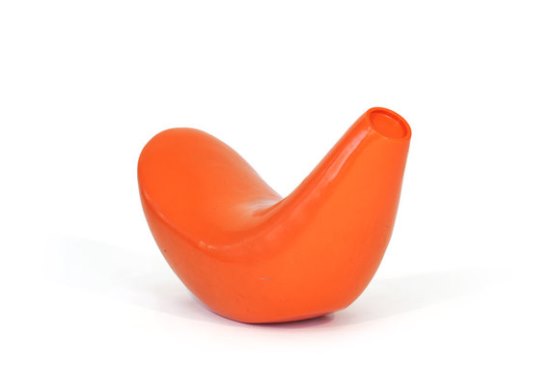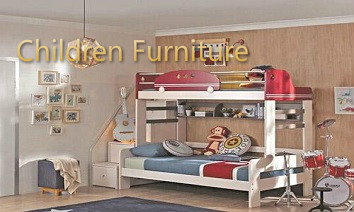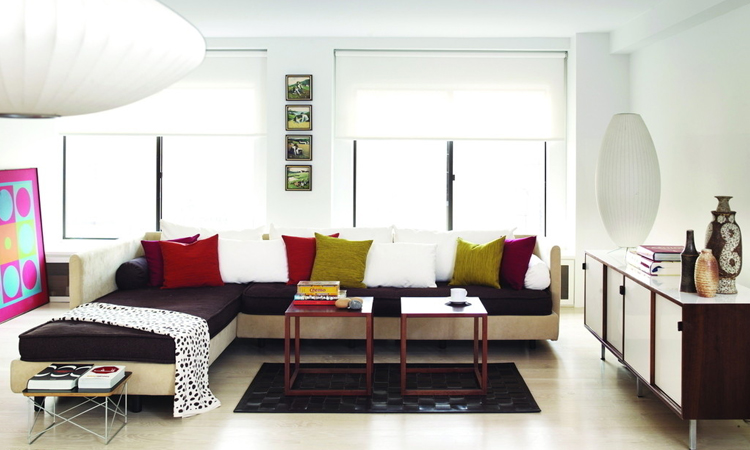
(Photo by Lora Appleton)
Designing furniture for children is an art. Not only does the furniture have to capture the interest and imagination of children, it needs to fit them. That is, scale, proportion, and balance are key elements in finding the proper fit; character, humor, and purpose are the elements of function. In finding out what is essential to the successful creation of children’s furniture, we teamed up with the pro, Lora Appleton, owner of KinderModern. Lora and her assistant Shea create and purvey both new and vintage genre pieces. What’s unique about their operation is that all the furniture in their wonderful Flatiron atelier, both old and new, appears so similar in style and so consistent in theme and form. Lora notes:
“Child design is about play combined with the consistent, practical elements of daily life: a need for durability, innovation, and imagination. Children’s spaces must be designed for different actions and activities, including learning, living, and playing with friends. A well-designed child space helps them grow up, engages their ability and need to move, and is injected with safe elements that allow their bodies to wiggle and climb. Furniture must not be ‘disposable,’ but made from strong and safe materials.”

(Photo by David Estreich)
When designing children’s rooms, consideration must be given to the size of each piece and to its particular level of security, so as to soften the transition from the walls of the crib to the ever-widening walls of the room “The best children’s spaces are where children feel safe and their imaginations can grow. On a practical level, things should be kept low and easy to reach, which offers autonomy and independence,” Lora says. “Colors should be serene, but mixed with pops of graphic patterns. Furniture should be soft for getting wild!” Indeed, the admixture of the imaginative with the comforts of security are oftentimes strange bedfellows, defying each other’s purpose. That is probably why designing children’s furniture and rooms can be such a distinct challenge.
Below are Lora’s six basic attributes of successfully designed children’s furniture.

(Photo by Lora Appleton)
1.) Play & Imagination:
“Child design is about play combined with the practical elements of daily life: a need for durability, innovation, and imagination,” Lora notes. “Imaginative play is a key part of child development as it helps children to understand and interpret reality. Through this type of play, children gain necessary and nuanced social skills, learn about their neighbors, both locally and globally, and explore infinite potentialities for their own futures. By filling their spaces with creative elements, children’s brains are stimulated and critical, imaginative thinking is engaged, allowing for social and emotional development. Therefore it’s great to adapt and embellish a child’s space beyond simple needs, and establish a beautiful and safe haven for them to learn through play, interact with others, and, perhaps most importantly, sleep comfortably, an essential component of healthy mental and physical development.” And, yet, the theme of consistency and the comfort of knowing what is expected is also key. Knowing that there is a fundamental structure from which the imagination can take off is essential to the design of the room. For instance, a child’s bed is usually placed along side of two perpendicular walls in order to create secure boundaries. Thus, the two contrary ideas of structure and imaginative release are at the foundation of the best design of children’s rooms and furniture.
“Some design elements in creating furniture for children are pretend play items, such as kitchens and school house settings, as well as décor that is inspired by fairytales such as twinkle lights, castle play houses, fun fantasy automobiles and other objects that engage the mind,” says Lora, pointing to the sleek “Testa Calda” tractor from Kartell, part of their first ever kid’s collection which launched at Milan’s Salone de Mobile in 2016. It is minimalistic enough to stretch and challenge a child’s imagination, yet still manages to evoke vintage style with a touch of nostalgia for parents and grandparents. Designed by contemporary Italian master Piero Lissoni, the vehicle is made from color clear polycarbonate with a metal structure. The line also includes the “Discovolante” race car. Kartell brands this new and exciting line as “toys for living.”

(Photo by Lora Appleton)
2.) Multi-purpose Use:
“Children’s spaces must be designed for different actions and activities, including learning, living, and playing with friends.” In these instances, functionality is paramount. Here, Lora deems the “Me Too” line multi-functionality at its best. First, the “Trotter” by Rogier Martens is both a seat and a fun “wheelbarrow” for children to transport toys (and perhaps even a little sibling) around the house. Made from painted steel and polypropylene, this conversation-starting chair is poised to be part of a family’s home for many years. Second, the Little Big by Big Game grows with your child with three different height settings and can be used by kids, tweens, teens, and even small adults! The smooth lines of the plastic shell and clean construction of the sturdy wooden feet give the chair a mature feel that the designers intend to engender emotional ties between the user and the object, encouraging use over a lifetime.
3.) Safety & Movement:
Here again the concept of boundaries and envelopment are essential to the design of a child’s space. Lora notes that “A well designed child’s space helps them grow up, engages their ability and need to move, and is injected with safe elements that allow their bodies to wiggle and climb.” The room’s flexibility allows for the maturing of both the individual and the growing into it as a teenager. In other words, its basic elements remain a constant, but the individual pieces change and grow in size. “When considering safety and movement, age is the most important factor. For smaller children, items that need supervision during play must be kept out of reach, which creates a need for chic storage. This can be in the form of decorative bins or rubber tubs for soft toys industrial or linen boxes for out of reach storage all fit the bill and depending of the space can be a super fun addition. As the child moves past toddlerhood (ages 3+) and begins developing fine motor skills, the key becomes finding the sturdiest play tables, without sharp edges, and well-balanced chairs. The play table typically is the key focal point in the child’s space and the rest of the decor takes its cues from that choice,” says Lora.
Inspired by Gebruder Thonet’s Vienna Rocking Chair, the Furia is a playful and whimsical take on the classic design. Both a functional play object and beautiful piece of sculptural design, it incorporates the traditional bent plywood with a soft leather seat and cheeky ears. Swedish group Front, known for their fantastic narrative design, for Gebruder Thonet Vienna (GTV), designed the rocker. A rocker such as this is an easy way to add style to your home and provide your child a safe place to strengthen balance, expend excess energy, and have a lot of fun!

(Photo by Lora Appleton)
4.) Materiality:
Like all well constructed furniture, children’s piece must be well made. “Furniture must not be ‘disposable,’ but made from strong, safe, and beautiful materials,” Lora says. Some may argue that because children will outgrow their furniture that it makes sense to purchase inexpensive cheaply made goods. But because children’s pieces take such a beating and because children sometimes chew or gnaw on their tricycles or chairs, it is even more important that any harmful finishes be kept to a minimum. In addition, Lora says that “the materials we choose for our children will be some of the most visually stimulating items in their environment. By choosing pieces in unique and innovative materials, the child’s mind is continually engaged and challenged. When we purchase well-made, durable items, the whole family becomes engaged in the care and keeping of the special furniture and objects that create the family home.”

(Image courtesy of Poltrono Frau)
Furniture that becomes a family staple during childhood will eventually grow to be a treasured heirloom, promoting sustainable living by teaching children that furniture and objects are meant to last a lifetime. As children mature they remember those items from their own home and, inspired by nostalgia and memory, learn to instinctively appreciate good design (and perhaps even emulate it, as young budding designers). A mix of materials is idea: combine wood, recycled materials, vintage items, fun pops of resin, or rubber to create an individually chic child space.
While some parents may think a play table should be cheap to avoid stains and spills, the HAND 01 child table, a paper-topped, modular birch plywood table from emergent British design studio HAND in partnership with paper company G.F. Smith, is a piece of design parents and design enthusiasts will want to keep for years. The tabletop holds over-sized sheets of paper for all kinds of art projects - simply tear off your masterpiece to “clean” the surface.
5.) Practicality & Function:
While children may enjoy the intrigue of doing puzzles, when it come to furniture the function of each piece should be easy enough for them to figure out how to use. “On a practical level, things should be kept low and easy to reach, which offers autonomy and independence,” advises Lora. If functioning is fluid and easy, children will be able to take pride in having figured out how to use or work a toy. The Robot Shelf, designed by Umzikim & Kyuhyung Cho for Desklab, invites the user to choose their own elements to create a truly one-of-a-kind shelf, table, or decorative item. This is ideal for kids ages six and up, who begin to test the limits of their own autonomy and explore their own unique aesthetic likes and dislikes. Not only are they offered choices in color and shape when creating their shelf, but such a fun and collaborative design encourages children to clean up their toys and other special items by providing a dedicated place for them to display and “curate” all of their favorite things.
6.) Color, Pattern, & Texture:
Not unlike adult furniture, consistency of color and pattern is basic to a room’s design success. In designing children’s furniture, Lora notes “colors should be serene, but mixed with pops of color and pattern. Furniture and textiles should be soft for getting wild!” She adroitly observes that “color evokes mood and drama, while patterns promote individuality. Using color, pattern, and texture enables the parent and the child to create a unique space that is all their own. Strong colors and graphic patterns are great for high energy, creative types, while delicate patterns and soft palettes are wonderful for the introspective little ones. Contrast works well for boys and girls, but can also be a fun choice for twins or siblings sharing space.” For instance, kinder GROUND, a modular carpet and geometric rug line, combines soft, all natural 100% New Zealand wool with bold patterns in “new neutrals” for the perfect family friendly floor covering. Hand-tufted by skilled artisans and then carved into a high-low carpet pile, the rugs are comfy to play on and easy for babies to crawl over. Each intersecting pattern was designed to build out infinitely, while interacting with the other designs in the line, allowing the user to choose a unique combination of patterns and colors to fit their home.
There is definitely an art to designing successful children’s furniture. By understanding the psychological and functional needs of children in their surroundings, successful smaller -scaled furniture can be made for both imaginative and multi-functional needs.
(Source: huffingtonpost.com Author: Gail Green)






























 沪公网安备31010402003309号
沪公网安备31010402003309号